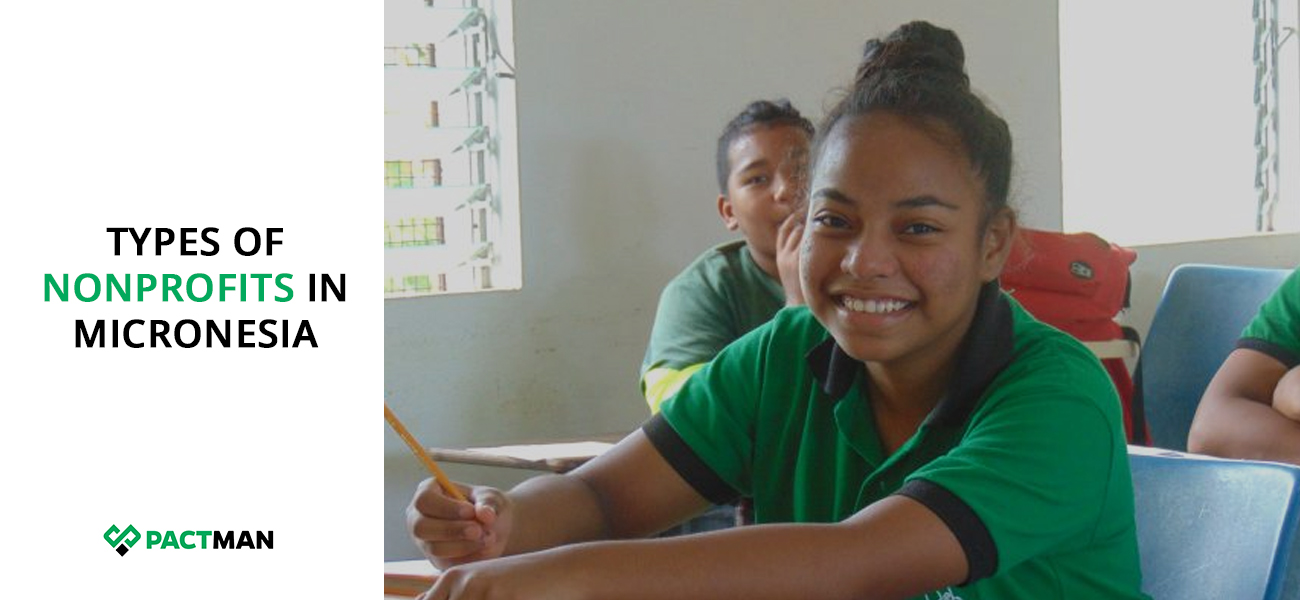NGOs can consist of a small, informal group of activists focused on a single issue or a sizable, well-respected organization with a broad range of objectives. By and large, the various types of nonprofits are fervent about addressing critical issues within their jurisdiction.
These organizations have assisted in combating climate change, eliminating gender-based violence, promoting good governance, reducing poverty, and providing educational opportunities to name a few.
In this article, we will consider the various types of nonprofits in Micronesia as well as their operations.

- The diverse classes and types of nonprofits have become the major drivers of social development as well as democracy in a nation
- NGOs regardless of size are primarily known for their contribution to addressing large and intricate societal matters.
What are the types of nonprofits in Micronesia?
Micronesia recognizes three classes of nonprofits in the country. Likewise, each of these entities is regulated under the code of the Federated States of Micronesia. We will provide a brief overview of the various classes.
1. Nonprofit Associations
According to the Micronesia Articles of Incorporation, these types of nonprofits do not pursue financial gain. As a result, all assets, earnings, or income are not disbursed to members, directors, or individuals. Exceptions are only given in the area of payment for reasonable compensation for services done.
Generally, nonprofits are prohibited from owning or holding more real property than is reasonably necessary to carry out its purposes. Also, these entities must not engage in any activity, directly or indirectly, for profit.
Nonprofits comprise members rather than stockholders. Hence, they do not issue any capital shares. The organization’s board of advisors comprise persons elected by the organization’s members.
2. Trusts
The FSM Trust Fund Act govern these types of nonprofits. Hence, all assets of the Fund will be held in trust by the Board for use solely in accordance with the chapter and the purposes outlined in it.
Basically, each trustee will hold office for a term of four years or until a replacement is chosen. In addition, two initial board members will be given two-year tenure and a chairperson will be chosen by the Board from among its members.
It should be noted that only a law passed by the FSM Congress has the authority to dissolve the Fund. Likewise, after the Fund’s operations come to an end, all activities must stop immediately. However, there are exceptions given for the orderly realization and preservation of its assets and the payment of its debts.
3. Cooperative Association
In the Federated States of Micronesia, Cooperatives are not singled out in any way within the definition of business Income Tax Law. Also, the law does not indicate in any way that cooperatives are to be treated differently from corporations or enterprises.
However, each cooperative association must adopt a set of bylaws for its governance and management within thirty (30) days of incorporation. These regulations must be compatible with the Cooperative Chapter.
Generally, a Cooperative and its members are allowed to enter into legally enforceable marketing agreements.
The Board of Directors is responsible for managing all operations of the association. The executive committee on the other hand can also be established by the bylaws. Hence, the committee may be conferred all the duties and authority of the board of directors with the board maintaining overall control and direction.
How many nonprofits are in Micronesia?
With a small population of less than 600,000, one can opine that Micronesia will have a small fraction of nonprofits. However, Cause IQ, an information platform for NGOs, reported that the total assets of the various Micronesian nonprofits total $24 million.
Likewise, a large fraction of the earned revenue is obtained from large organizations like Micronesia Conservation Trust (MCT), Yap Community Action Program, and Yap Area Health Education Center.
Nonprofits with revenue below $1 million make up 20.3% of total nonprofit revenues. Also, there are no organizations with nonprofit earnings of over $100 million.
Organizations dedicated to protecting natural resources as well as managing primary and secondary schools and public health initiatives typically garner the most funds. Above all, large institutions like Yap Community Action Program, Micronesia Conservation Trust (MCT), and Yap Area Health Education Center are major employers in the Federated States of Micronesia.
Conclusion
The diverse classes and types of nonprofits have become the major drivers of social development as well as democracy in a nation. These entities go as far as influencing political responses to many crucial issues. Furthermore, NGOs regardless of size are primarily known for their contribution to addressing large and intricate societal matters. These organizations have advanced beyond providing basic services to creating significant impact.
If you enjoyed reading this article, please share your comments and suggestions with us at the bottom of this post.


